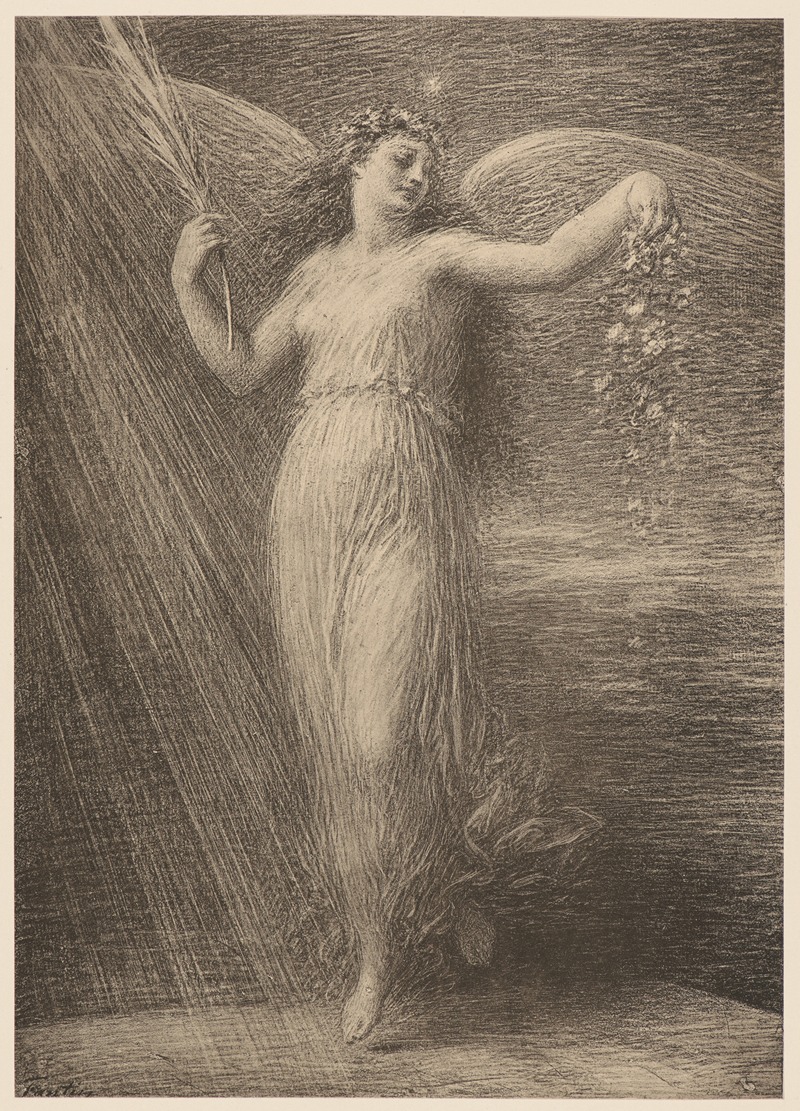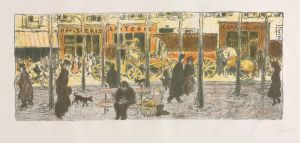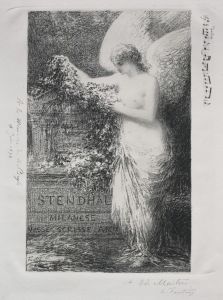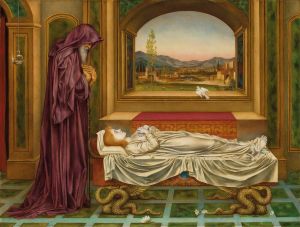
Immortality
A hand-painted replica of Henri Fantin-Latour’s masterpiece Immortality, meticulously crafted by professional artists to capture the true essence of the original. Each piece is created with museum-quality canvas and rare mineral pigments, carefully painted by experienced artists with delicate brushstrokes and rich, layered colors to perfectly recreate the texture of the original artwork. Unlike machine-printed reproductions, this hand-painted version brings the painting to life, infused with the artist’s emotions and skill in every stroke. Whether for personal collection or home decoration, it instantly elevates the artistic atmosphere of any space.
Henri Fantin-Latour, a renowned French painter and lithographer, is celebrated for his exquisite still lifes and group portraits of Parisian artists and writers. One of his notable works is "Immortality," a painting that reflects his deep engagement with themes of beauty, nature, and the ephemeral nature of life.
Henri Fantin-Latour was born on January 14, 1836, in Grenoble, France. He received his artistic training at the École des Beaux-Arts in Paris and developed a close association with several prominent artists of his time, including Gustave Courbet and Édouard Manet. Fantin-Latour's work is often characterized by its meticulous attention to detail and its delicate interplay of light and shadow.
"Immortality" is a testament to Fantin-Latour's skill in capturing the transient beauty of flowers. The painting features a carefully arranged bouquet, showcasing a variety of blooms in different stages of life. The composition is both harmonious and dynamic, with each flower meticulously rendered to highlight its unique form and color. The use of light in the painting enhances the textures and creates a sense of depth, drawing the viewer's eye into the intricate details of the arrangement.
Fantin-Latour's choice of subject matter in "Immortality" reflects his fascination with the natural world and his desire to preserve its fleeting beauty. Flowers, often seen as symbols of life and death, serve as a poignant reminder of the passage of time. Through his precise brushwork and subtle use of color, Fantin-Latour captures the essence of each bloom, imbuing the painting with a sense of timelessness.
The title "Immortality" suggests a deeper philosophical reflection on the nature of existence and the enduring power of art. While the flowers themselves are ephemeral, the painting serves as a lasting tribute to their beauty, allowing them to be admired long after they have withered. This theme of preserving the transient through art is a recurring motif in Fantin-Latour's work, underscoring his belief in the enduring value of artistic expression.
Fantin-Latour's "Immortality" is also notable for its technical excellence. His mastery of the still life genre is evident in the careful composition and the lifelike quality of the flowers. The painting demonstrates his ability to balance realism with a sense of poetic beauty, creating a work that is both visually stunning and emotionally resonant.
Throughout his career, Fantin-Latour remained dedicated to his artistic vision, often working in relative isolation from the mainstream art movements of his time. Despite this, his work gained recognition and admiration from both contemporaries and later generations of artists and collectors. "Immortality" stands as a testament to his enduring legacy and his contribution to the world of art.
In summary, "Immortality" by Henri Fantin-Latour is a masterful still life painting that captures the fleeting beauty of flowers with remarkable precision and sensitivity. Through his meticulous technique and thoughtful composition, Fantin-Latour creates a work that transcends the ephemeral nature of its subject, offering a timeless reflection on the power of art to immortalize the transient moments of life.

















